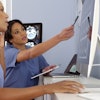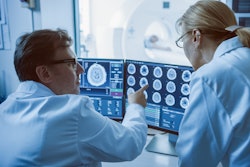The Harvey L. Neiman Health Policy Institute (HPI) has developed and released a comorbidity index designed to help predict the use of advanced imaging.
Titled "The Neiman Imaging Comorbidity Index (NICI)," the document "fills a gap in risk-adjustment methods for imaging utilization," and was developed based on radiology claims for 10.5 million individuals covered by healthcare service provider Optum's Clinformatics Data Mart database, the Neiman HPI said in a statement. It was published January 24 in the Journal of the American College of Radiology.
"In designing the NICI, we balanced the marginal improvement in the ability to predict advanced imaging use from each comorbidity included in the NICI," said lead author Casey Pelzl. "Because we were able to limit the number of comorbidities included in the NICI, we were left with an index that is far easier to use than the existing indexes such as [the Charlson Comorbidity Index (CCI)]."
Risk adjustment is a statistical process that helps predict a person's likely healthcare use and its cost; imaging utilization research requires adjusting for differences among patients to provide unbiased conclusions, according to the institute's statement. The CCI is widely used, but it was developed to predict mortality in a cancer patient population, not imaging in a broad patient population, according to the Neimen HPI.
To craft the index, Pelzl and colleagues used claims data from 10.5 million Optum beneficiaries from January 2018 to December 2019; of these, 2.1 million underwent advanced imaging. The group used Lasso (i.e., least absolute shrinkage and selection operator) regression to predict an individual's chance of receiving advanced imaging in 2019 based on the presence of comorbidities in 2018 and created a development cohort (made up of 70% of the claims) that consisted of nine weighted comorbidities. The researchers then validated the NICI model's scores for predicting the use of advanced imaging with the remaining 30% of the claims and compared these results to the CCI.
The NICI achieved good prediction of a patient's likelihood of undergoing advanced imaging, with an area under the receiver operating curve (AUC) of 0.71, better than the CCI model (AUC, 0.69). When Pelzl's team controlled for age and sex, the NICI model's ability to predict the likelihood of advanced imaging improved further, with an AUC of 0.75.
"In the end, the NICI included nine comorbidities that are statistically correlated with advanced imaging use," she said. "In comparison, the CCI has 17 comorbidities, yet the NICI is more predictive of advanced imaging use. This is not a criticism of the CCI, but rather, a benefit of the imaging-specific NICI, a simple and effective tool for researchers."
The NICI is an "easily calculated measure of comorbidity burden that can be used to adjust for patients' chances of receiving advanced imaging," Pelzl and colleagues concluded.
The complete study can be found here.



















